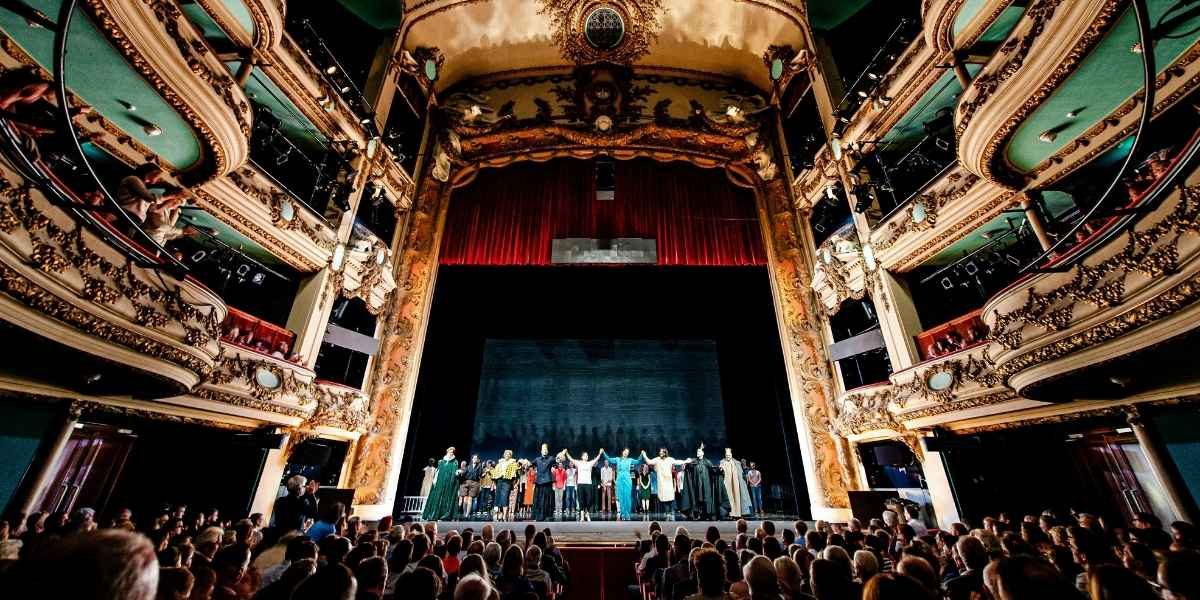How Technology is Transforming the Performing Arts Landscape
The performing arts have long been an essential part of human culture, but in the 21st century, technology is reshaping how performances are created, consumed, and experienced. The rise of digital tools and platforms has opened new doors for innovation in the arts, allowing artists to experiment with new formats and expand their reach beyond traditional venues. From live-streamed concerts and virtual theater performances to interactive multimedia installations, technology is bringing performing arts into a new era, making it more accessible and engaging for audiences worldwide.
One of the most significant transformations has been the ability to stream performances in real-time, allowing people from all over the world to experience performances that were once geographically restricted. For example, major cultural institutions like the Royal Opera House and National Theater have embraced live streaming, bringing performances into homes and classrooms, making high-quality productions accessible to a global audience. This democratization of performance art not only reaches larger audiences but also offers opportunities for new business models, such as on-demand viewing and subscription-based services.
Read Also: Building a Foundation: The Value of Acting, Singing, and Dance Classes for Aspiring Performers
Digital technologies also enable artists to blend traditional performance techniques with cutting-edge innovations. Augmented reality (AR) and virtual reality (VR) have begun to influence the creation of immersive theatrical experiences. Projection mapping allows for dynamic, interactive sets that transform the stage, while motion capture technology helps to create stunning visual effects in dance and performance art. This intersection of technology and creativity has introduced new forms of artistic expression that resonate with younger, tech-savvy generations while also preserving the essence of live performance.
What Are the Benefits of Digital Innovation in the Performing Arts?
The integration of digital technologies in performing arts brings several benefits that enhance both the creation and consumption of artistic work. One of the primary advantages is the ability to reach broader audiences. With online streaming and digital content platforms, performances are no longer limited to the physical constraints of theater seats or concert halls. Artists and organizations can connect with audiences globally, leading to a more inclusive cultural experience. This expansion also allows for greater diversity in terms of audience demographics, reaching people who might otherwise not have access to live performances due to location, disability, or financial limitations.
Digital tools also offer artists more freedom to experiment with new ideas. For example, electronic music producers, dancers, and actors can incorporate digital media, video projections, and interactive elements into their performances, pushing the boundaries of traditional art forms. This allows for more collaborative opportunities, as artists from different disciplines, locations, and backgrounds can work together in real-time using digital platforms. Additionally, social media and digital marketing give artists the chance to build global followings and directly engage with fans, transforming the way they connect with their audience.
Beyond the creative benefits, digital innovation has also improved the production process in the performing arts. Technologies like 3D printing are being used to create intricate sets and props more efficiently, while digital sound design tools enhance the audio experience for both performers and audience members. These innovations streamline logistical processes, reduce costs, and provide artists with tools that were previously unavailable, allowing them to bring their artistic vision to life with greater ease and precision.
How Is the Digital Stage Changing Audience Engagement?
The digital stage is not just changing how performances are created; it is also revolutionizing how audiences engage with and experience live art. In the past, audiences were largely passive viewers, watching a performance unfold without much interaction. Today, however, audiences have the opportunity to become active participants in the performance. For example, digital platforms such as interactive theater use technology to allow audiences to influence the outcome of the show, blurring the lines between performer and spectator. VR and AR experiences offer audiences the chance to step inside the performance and experience it from a first-person perspective, offering a level of immersion that was previously impossible.
Digital platforms also enable audiences to access a broader array of performances, including niche genres or independent works that might not have the resources to stage large-scale productions. Virtual festivals, for instance, have gained traction, where audiences can attend multiple performances from different artists or cultural groups across the globe in a single day. This democratization of access means that audiences can explore a wider variety of performances that they may never have encountered otherwise.
Another critical aspect of audience engagement is the social media experience. Platforms like Instagram, Twitter, and TikTok have allowed performers to interact directly with fans, giving them behind-the-scenes glimpses of their creative processes or creating conversations around performances. This digital dialogue fosters a sense of connection between artists and their audiences, making the arts feel more personal and accessible. Moreover, social media allows performances to go viral, reaching audiences in ways that were never possible before.
What Challenges Does Digital Transformation Pose to Performing Arts?
While digital innovation offers many advantages, there are also several challenges that come with embracing technology in the performing arts. One of the primary concerns is the loss of the live, in-person experience. Many people believe that a key part of what makes live performance special is the shared experience—the energy, the emotions, and the connection between the performers and the audience in the same physical space. While digital platforms allow for broader access, they can’t fully replicate the magic of live performances, which may lead some to question whether virtual experiences can truly capture the essence of art.
The cost of implementing new technology can be prohibitive for some organizations. For smaller theaters, dance companies, and independent artists, the expenses involved in digital productions—such as purchasing equipment, hiring specialized technicians, or developing interactive platforms—can be a significant barrier. As a result, there is a risk of widening the gap between large, well-funded institutions and smaller, more community-focused groups that may not have the resources to embrace digital transformation.
There is also the concern of digital fatigue, as audiences are increasingly overwhelmed by the sheer volume of online content. With the proliferation of streaming services, social media platforms, and on-demand content, it can be challenging for performing artists to maintain audience attention and engagement. To stand out, artists need to be innovative and strategic in how they create and promote their digital content, ensuring that their work remains distinctive and compelling in a crowded digital space.
What Is the Future of the Digital Stage in Performing Arts?
The future of the digital stage in the performing arts is incredibly promising, with continued innovations in interactive technology, virtual reality, and augmented reality likely to reshape the industry even further. We can expect to see more hybrid performances, where digital and live elements are seamlessly integrated to provide audiences with unique, multi-dimensional experiences. For example, theater companies might use projection mapping to create ever-changing sets, while dancers might interact with digital avatars in real-time.
Read Also: How Special Effects in Film Have Evolved Over Time
The rise of artificial intelligence (AI) could lead to even more personalized experiences. AI could be used to analyze audience preferences and adapt performances to cater to individual tastes. Imagine a concert where the setlist is determined based on the mood or energy of the crowd or a theater performance that changes based on the audience’s decisions.
As digital platforms continue to evolve, global access will remain a major focus, allowing people from all over the world to experience high-quality performances from anywhere at any time. By making the performing arts more accessible and more interactive, technology is not only enhancing the experience but also creating new opportunities for collaboration, creativity, and growth. The digital stage is here to stay, and its continued evolution will only serve to further enrich the world of the performing arts.














